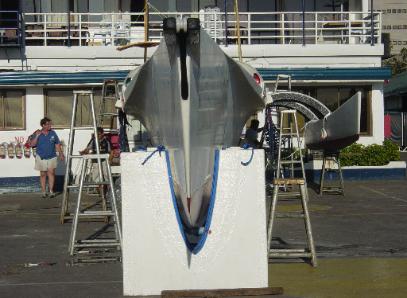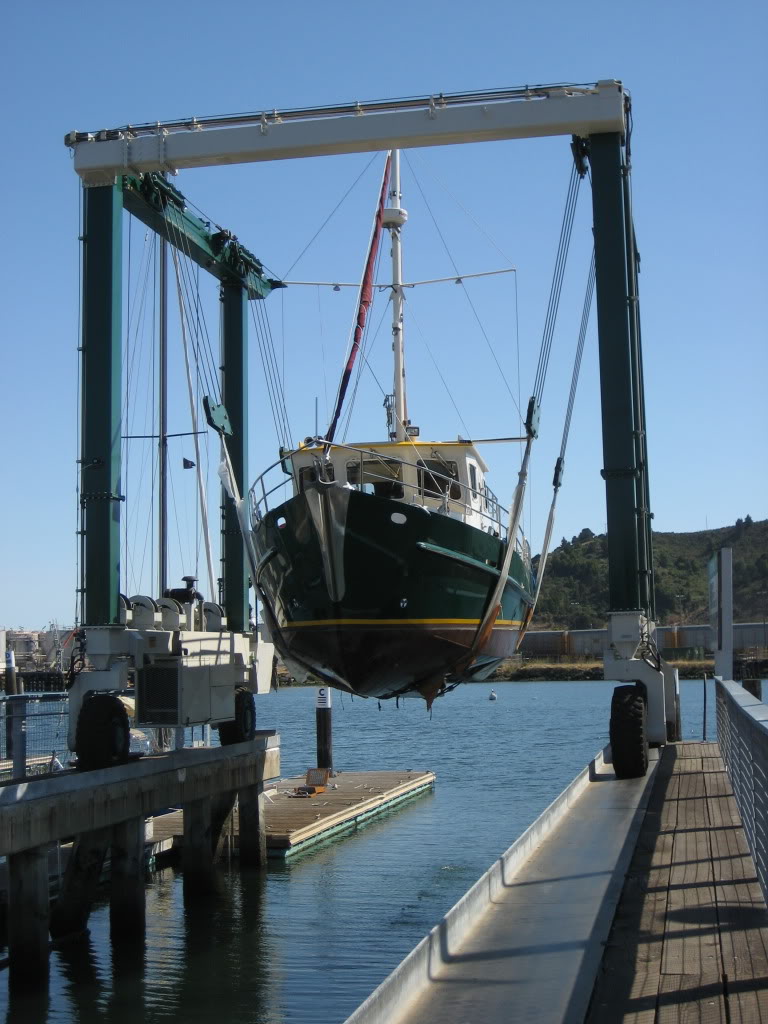magicbus
Senior Member
- Joined
- Nov 14, 2010
- Messages
- 460
Yes it has a Selene with a very high angle that caused the lift and block guy a bit of confusion when I made him block the front end a foot higher than the stern.
Dave
Dave


Fatty
the photo of your last boat ?
Or your trimaran lost one arm ?
Just had one off. They are just pinned and lashed on.
i am thinking your prao is already finish.
I wonder about the black bottom paint. A fisherman locally says the black antifoul has much better antifouling properties. I've never heard of such a thing. I've always been a traditional red bottom guy but I thought color was just color. Could there be any truth to that?
Strange that you would have a 4 blade propeller w only 101 hp. Looks like a high blade area too.
I see very few recreational boats in the yard with red (rust red) bottom paint anymore.


Strange that you would have a 4 blade propeller w only 101 hp. Looks like a high blade area too.
We have the first 46 to have a non-Lugger main engine
Marin,
I'm quite sure the smallest Deere is a Toyota.
Re the black anti-foul .....good, I kinda thought that was so.
Re the propellers usually a larger area blade or more blades are used to absorb more power and to optimize blade loading within the space the boat has to offer. A higher aspect ratio 3 blade should be a tad more efficient than fosborne's wide 4 blade but his prop looks like about the best possible for smoothness.
I have room for a much larger dia prop on the Willard but for some reason an 18" prop is what Willard provided. I'd like to change to a 3-1 gear and run a 20" (or so) prop but not worth changing......probably. Or w a 3.5-1 gear perhaps even a larger prop. But the efficiency drops off faster w bigger slower turning props as you reduce speed even though at full speed/load the larger prop excels we all run well down the curve where a smaller prop may be just as efficient.
Marin,
I'm quite sure the smallest Deere is a Toyota.
Mark wrote:
"I suppose it's because the Coot was designed to go slow."
Probably it's because of the limited vertical space available. Also a 3 blade prop on the Coot would bring the blades closer to the bottom of the boat and cause more hydrodynamic vibration on the thin steel bottom. All is not always as it appears.
3 over 4 more efficient as you approach top end... because many of us run at way less than top rpm...the four bladed is considered more efficient at cruise rpm because it is SO slow.
I dunno about that. Older GBs like ours with low-power Lehmans in them came from the factory with three-bladed props. When we thought we had to replace our props the shops we talked to all recommended we go back to three blades as they said they would be enough more efficient to be worth going back to as long as we didn't have a vibration problem (which we didn't). Our engineer friend from Northern Lights/Lugger told us the same thing.
So we decided to change back to three-bladed props specced the same as the ones that American Marine installed on the boat when they made it. But when the prop shop said our four-bladed props were fine physically, they were just horribly set up, we decided to save a ton of money had have them rework what we had rather than buy new props.


